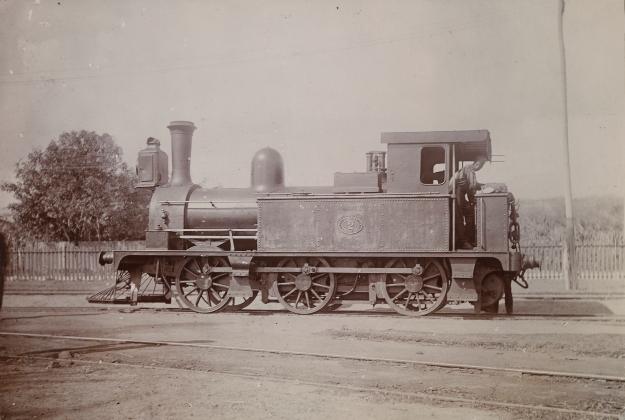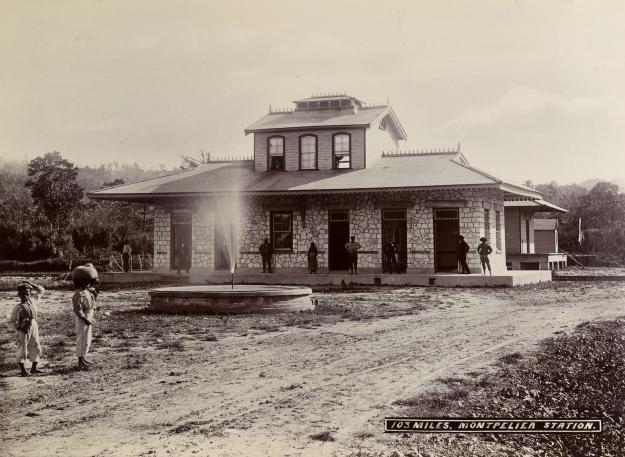Building the Railways: a brief look at the Crown Agents photograph collection
Posted on by Fay Curtis.
By Jayne Pucknell, Archivist
The British Empire and Commonwealth Collection at Bristol Archives includes fascinating archives relating to railways. One large photographic collection that we have recently catalogued was created by the Crown Agents (ref. 1999/221) who oversaw construction of major railway lines running through different parts of the empire.
Established in 1833, the Crown Agents for the Colonies was set up by the British Government to manage the financial and business affairs of colonial administrations. Its role included managing loans and grants, procuring and supplying goods and services, and supervising major infrastructure projects.
We hold evidence of the work of the Crown Agents in overseeing the construction of major railway networks through many countries – to name a few, there are images from Nigeria, Sierra Leone and the Gold Coast in Africa; Ceylon and Singapore in Asia; and Trinidad and Jamaica in the Caribbean.
An absolute must-see for train enthusiasts, this collection consists of over 7,000 images of railways, trains, carriages, wagons and cranes. The main series of photograph albums contains 115 volumes dating from 1890 to 1983, although the photographs are mainly from the 1890s to 1930s.

British-manufactured steam locomotive at a siding from the Jamaica Railway (ref. 1999/221/1/62/53)
The Crown Agents would have wanted photographic evidence of the railways and trains for inspection purposes, to check that suppliers were meeting their contractual arrangements. The locomotives and carriages were generally built by UK engineering companies (such as Birmingham Railway Carriage & Wagon Company and the Gloucester Railway Carriage & Wagon Company) for supply to the colonies.
However, this collection is not just for the railway fan. The first group of 62 volumes show scenes of the workers who built the railways, doing hard manual labour as they made cuttings and built bridges, stations and tunnels, as well as queuing for their wages on payday. There are also views of the countryside around the railway developments and some street scenes.
In the Jamaican volume, we can follow the construction of the extension line from Porus to Montego Bay in 1895. Also pictured is the Port Antonia extension which opened the following year: this 54-mile route was built to serve the banana, cacao, citrus and coconut districts of St Catherine, St Mary and Portland.

Montpelier Railway Station, Jamaica (ref. 1999/221/1/62/16)
Through the photographs, we can follow the routes of the extended lines over bridges, alongside cuttings, through tunnels and past the new railway station buildings and workshops. Montpelier Station, which is on the list of designated National Heritage Sites in Jamaica, looks very different to our railway station in Bristol! At the end of the album, there are also street scenes in Kingston, including shots of the Kingston Tramway.
With the coming of independence to former colonies, the work of the Crown Agents didn’t stop. The organisation was authorised to carry on providing services to overseas countries, particularly overseeing projects with a developmental purpose. The Crown Agents were privatised in 1997 but still work with governments around the world.
If you are interested in railway history, we also have records from East African Railways and Harbours from the 1950s (ref. 2002/133), and photographs taken by Parlane MacFarlane who was a railway engineer on the docks in Mombasa in Kenya from 1921 to 1946 (ref. 1999/135).
These photographs are now available for you to look at in our public searchroom. For more information, please contact [email protected]
References:
- Featured Image : An open-sided tram is pulled along rails by two mules, Kingston Tramways (ref. 1999/221/1/62/76)
With thanks to
This catalogue was produced with support from the National Cataloguing Grants Programme for Archives.